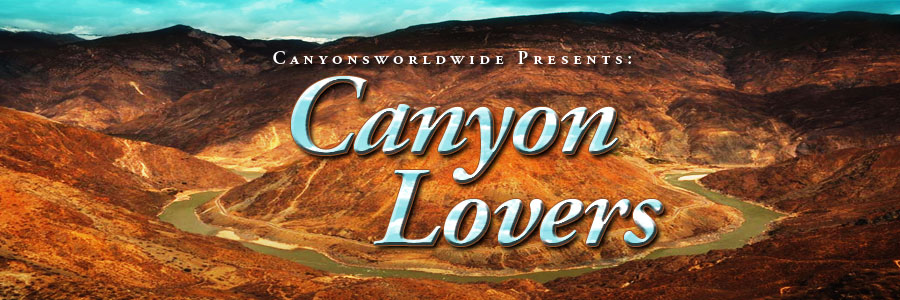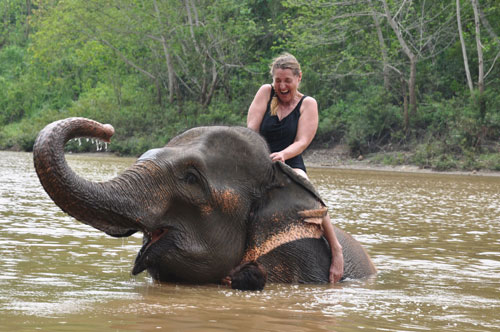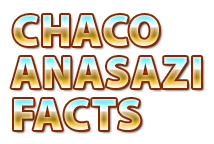May
10
A friend emailed us this message:
“Great to hear that you are putting Laotian Canyons on the world map and introducing new words to Sanskrit dictionaries in South east Asia.”
“It would be a bit presumptuous for us to put any new words in the Sanskrit dictionary, but we were told by local authorities there was no word for canyon in the Laotian dictionary. What I have found world wide over the past 25 years is that there is often not any geographical distinction between Canyon and Mountain topography. In this, new discoveries and new concepts can emerge. Can anyone advise us of a word in the Laotian or Sanskrit languages for canyon?” Richard D. Fisher May 5, 2010
“Journey to a Paradise Found”
Whomever wants to feel the enchantment of a small paradise called Muang Ngoi Neua has to go there by river. No road ever carried any friend, foe or foreigner to the little village on the Nam Ou River in the North of Laos.
Just board in Nong Khiaw and the journey begins.
A Sea of Green.
Countryside of dreams.
Eco and Cultural tourism at it’s best.
Family Tropical lifestyles.
Childhood pleasures.
Karst topography of the Nam Ou River Canyon.
Even Lao water buffalo have itchy noses and find a way to scratch them and brown nosing is a worldwide tradition?
After leaving the high-season hustles of touristy Luang Prabang, the experience of floating along the river towards Muang Ngoi in a long pointed motor barge may be like a catharsis. Observing children playing jolly games at the banks, buffalos protruding their heads out of the water, while sensing the fresh winds and the pounding of the waves might inspire contemplation, an exercise of calmness, or even meditation.
Or, as in our case, the little boat might get so stuffed with young sun-tanned adventurers that it seesaws like being on the brink of capsizing.
You might have to persevere on hard, hurting wooden banks for one long hour, crammed together like sardines in a can. The dressy Italians in front of you might twist their mouths askew as you touch them with your legs accidentally, due to shortage of space.
Though, as the boat lands in Muang Ngoi, the squeeze is quickly forgotten. The green of the giant karst mountains fills up our thirsty senses. Palm trees caress the simple dirt road, the river winds through the valley in beautiful loops, pleasing the eyes. Tranquility immediately saturates the visitor’s mind.
For centuries, life in Muang Ngoi had been only affected by the gentle pace of the river. Fishing for dinner, panning river stones hoping for gold, spending hard days on the paddy rice field were activities which had given life its daily frame, its traditional routine.
Still in the afternoon, people take their daily refreshing bath in the river after finishing work here. Still, every evening, they observe the shadow of the mountains languorously bowing over their scattered huts and homes.
With one tiny difference: Muang Ngoi today is a prime example for the development of positive tourism in rural regions in Laos.
It had all began about ten years ago. Besides flotsam and jetsam, stones and fishes, the river one day also carried the first strangers ashore. Pale, mammoth foreigners with huge Jack-Wolfskin backpacks and soul stealing Olympus cameras stranded at the shallow banks of the Nam Ou in search of their personal paradise.
The first encounters with the visitors must have been strange. Different worlds may have collided, paradigms may have clashed. “Is this going to work out?” the village elder may have asked himself.
After some years, people got used to it. Restaurants and Guesthouses nowadays decorate the little road like colorful oddities and have become the inhabitant’s main source of income.
Quietly and constantly, tourism has brought Muang Ngoi income over the years.
Once being an adventurous insider tip, this sleepy patch of earth has finally developed into a relaxing waypoint at the Lao banana-pancake-trail.
Even so it is remarkable how the tourist growth seems to nestle into the peacefulness of the village, how harmoniously the pancake smell contrasts the fragrances of coriander and sticky rice.
A misty day, the mountains loom in a distance, covered with green velvet.
Clouds gather at the blue grey sky, subtly threatening.
It is in the air: The rainy season, insistently adjured by the Lao with New Year water ceremonies and rocket festivals beforehand, is about to return.
The mountains will be washed clean and will be given their lushness back. The grey and blue Nam Ou will be churned up and will rediscover a healthy reddish earth brown, ending as well the touristy high season.
In Khamla’s restaurant, mother, grandmother and daughter are sitting already well sheltered under a bamboo roof, peeling carrots, waiting for the rain. “With the time we found out more and more what foreigners like to eat”, says the mother, pointing proudly at the English menu. “Now we can make a living on running this restaurant.”
In the shelf, unchilled chocolate bars melt in their plastic wrappings. The village does not have electricity yet. A whiteboard advertises “Muesli with Fruits and Yoghurt”. They have learned all these tricks from Luang Prabang, have imported all these products from Vientiane.
In the night, the first thunderstorm of the year devours Muang Ngoi. I go outside, disturbed in my dreams, and the brutal beauty of the storm hits me like a slap in my face. Lightening perfuses the sky like white spectral veins. For instances, it creates negative images of the karst landscape. The central mountain looks even more stunning for the blink of an eye – a monstrous black outline cut into a white rainy sky.
The rainy season just arrived. Now the stream of visitors will be cut off a bit. The original village life will recapture Muang Ngoi now.
In Muang Ngoi, which never had any road access, there is one single car now. Some months ago someone had firmly claimed that a car would be somehow useful to cultivate the village’s rice fields. So they got a pickup from Luang Prabang. One man was on the wheel, thirty on the back, bushwhacking all the way to Muang Ngoi through the jungle with machetes for hours and hours.
The first rain just fell, and now that the rice planting period is about to come, the villagers of Muang Ngoi will try out their new four-wheeled trophy of modern spirit to plant their traditional source of living. It is just one of the fruits of an ambivalent miracle named tourism in Laos.
We bid a half million “kip” ( 60 USD) for this prime riverside property, and are still waiting to see if our offer is accepted.
The lineup of the usual, beautiful, eco tourism suspects crammed like sardines in a can, we motor up the river in our long pointed narrow wooden barge bobbing back and forth.
Slash and burn agriculture dominates the local tropical rainforest, the house used
to guard the maturing crops from raiding wild life is newly constructed..
Canyon beauty of the Nam Ou River Gorge..
The “Huck Finn” family of the Nam Ou River playing in the tropical aquatic paradise.
This girl’s smile reflects her inner spiritual happiness and not the dangerous and difficult job of panning for Gold in the middle of the river.
The “Grand Canyon” of Laos, as a new discovery of canyon topography.
You will notice the brilliant red-stained teeth and lips of the local women. Betel nut is the cause. Green betel nut is a nut that grows in the tropical climates of South East Asia and is popular in the South Pacific Islands. It is chewed as part of social occasions or as a part of everyday life. Betel nut has a mild stimulant effect and in addition to reasons of tradition local people chew it for stress reduction, heightened awareness, and suppression of hunger.
Akha in Northern Laos
The Akha in Laos are concentrated in the higher areas of the high plateau of Phongsaly (close to the Black River and Vietnam) and Luang Namtha Province (bordering Sipsongpanna, Burma, and the Mekong River) interspersed with Mien, Hmong, Khmu, Htin, Lisu, and Lahu. Some were displaced during the Vietnam war, in which they were involved in fighting the Americans or the CIA Hmong groups led by Vang Pao, and in conflicts between the Pathet Lao groups (Dassé, 1976; Cooper and Tapp, 1991). People calling themselves Akha in Laos are called, in Lao, I-ko or Kha Ko. Other names given by outsiders include: Puli, Pussang, Oepa, Oema, and Kopien. The number of Akha in Laos can be estimated conservatively to be between 92,000-100,000, but might well be higher (Lao UNESCO Committee, 1996; Duy Thieu, 1996).
Akha women wear the wealth of their families as coins on their colorful daily dress. Akha also have no written language and make up for it with very animated verbal communication.
The Akha
In the last 200 years the Kor or Iko (preferably called the Akha) have relocated to Laos , China , Vietnam , Thailand and Burma . They came from Kuaichao and Yunnan (modern day China ) to escape war and to cultivate the land. This traditional hill tribe has a population of just over 90,000 in Laos alone; they count over 15 different sub groups. The Akha have no written language, therefore communication becomes highly important. Akha men can usually recite their genealogies 60 generations back! This ability is what has helped link clans together over five nations.
The Akha usually live in remote valleys near mountain tops, 1000 meters above sea level and higher.
They mainly grow rice, maize and cotton. Some sub groups are known to grow indigo, vegetables, peanuts, sesame, and soybean. During the month of December the new cotton is spun into thread for the women to make crafts. Jewellery for the traditional headdresses, clothing, and neck-rings are (or rather used to be) made by the Akha men. Unfortunately traditional handicraft-making is steadily decreasing, as particularly Akha women have to work extremely hard and long hours which lets them prefer to buy cheap imports (plastic and aluminium goods) rather than making handicrafts by themselves. Increasingly, handicraft-making is seen as a necessity for poor families (the vast majority of Akha are extremely poor) who cannot afford to buy the imports.
As the menu shows, the Muang Ngoi people have learned that the tourists enjoy free range meats.
The Nam Ou meets the mighty Mekong at the ancient capital and modern tourism center of Luang Prabang.
On the Nam Khan River, the elephant Keo enjoys her daily swim with her girlfriend, Maria and her care taker, Chanty.
Photography by Maria Gates & Richard D. Fisher



























